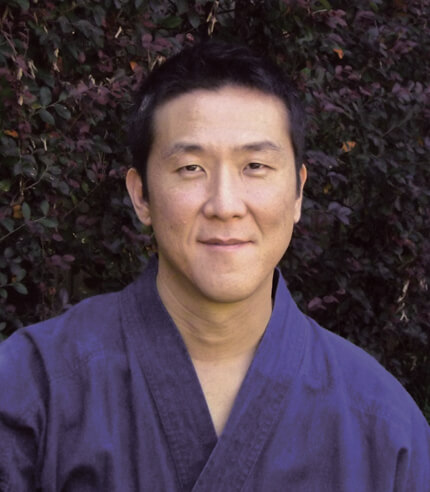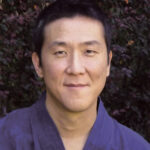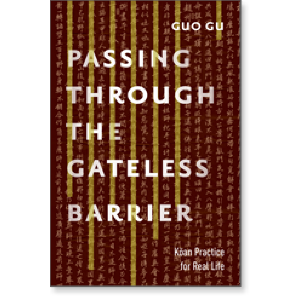
Guo Gu: I first learned meditation when I was in Taiwan at age four. A meditation master named Guangqin taught me how to sit in meditation, and I thought it was fun to copy what he was doing. Later, my family immigrated to the States when I was 11. We studied Chan Master Sheng Yen. He was to become my Shifu, or "teacher-father, " the most important person in my life who taught me that Buddhadharma is meant to be used in daily life and to be realized within myself.
S: Chan Buddhism isn't as widely known in North America as other forms of Buddhism are. What is it? How does it relate to the Zen with which Americans are more familiar?
GG: Chan isn't widely known because there weren't many teachers transmitting it in the West. Master Sheng Yen was one of two teachers transmitting it. However, this is slowly changing. Second generation teachers are beginning to transmit its teachings.
Chan is the father, or origin, of Zen. It is a Buddhist meditation school that first took shape in China some fourteen hundred years ago. It later became the most influential school in China and absorbed the best parts of all the other schools. It was transmitted to Japan about eight hundred years ago.
Chan and Zen are essentially the same, with the aim of direct awakening to wisdom, but due to the cultural differences in which they flourished and developed they appear different. For example, during the eighteenth century Japanese Zen became more secularized and underwent institutional reform, which lost Chan's original adaptive, inclusive, and flexible nature. It was this secularized form of Zen that was introduced to America. In Master Sheng Yen's and my writings, you will see that Chan is quite alive and dynamic.
S: Who was Bodhidharma, and what is this text Two Entries and Four Practices that is being commented upon here?
GG: Bodhidharma is the legendary founder of Chan Buddhism who came from India in the fifth century. He came to China during a time when Chinese Buddhism was still in its developmental phase of figuring out what Buddhism was about. Hence, a lot of focus was placed on theorizing about and establishing the correct doctrines of Buddhism. It was a phase of what I would call "Buddhist scholasticism. " Bodhidharma cut through the theories and pointed to the heart of Buddhadharma: that we are intrinsically free from the fetters of vexations and afflictions, and that our true nature is already perfect. He left behind several short texts. Two Entries and Four Practices is the most representative work.
S: What are the "two entries "?
GG: The two entries are gateways to realizing our perfect nature. The first entry is through principle, which refers to aligning oneself with the realization that we are intrinsically perfect. However, our true nature is covered up by delusion and vexations. This is where the second entry comes into play. The second entry is realized through practice. Specifically, the practice of four ways of relating to oneself and others in life.
S: What are the "four practices "?
GG: The four practices are: embracing retribution, adapting to conditions, nonseeking, and according with the Dharma. These four include all the essence of Buddhadharma and the heart of Chan.
S: What is the overarching message of this short text of Bodhidharma?
GG: The main message is that all of life's challenges and blessings are opportunities to realizing our own wisdom and compassion. But we need correct views and effective methods of practice. My commentary gives practical advice on how to apply them to concrete life situations. Many people think of Chan or Zen as either some kind of abstract philosophy or as being only about meditation. This is wrong. Chan is dynamic; it is about living life in tune with who we really are in wisdom and compassion.


